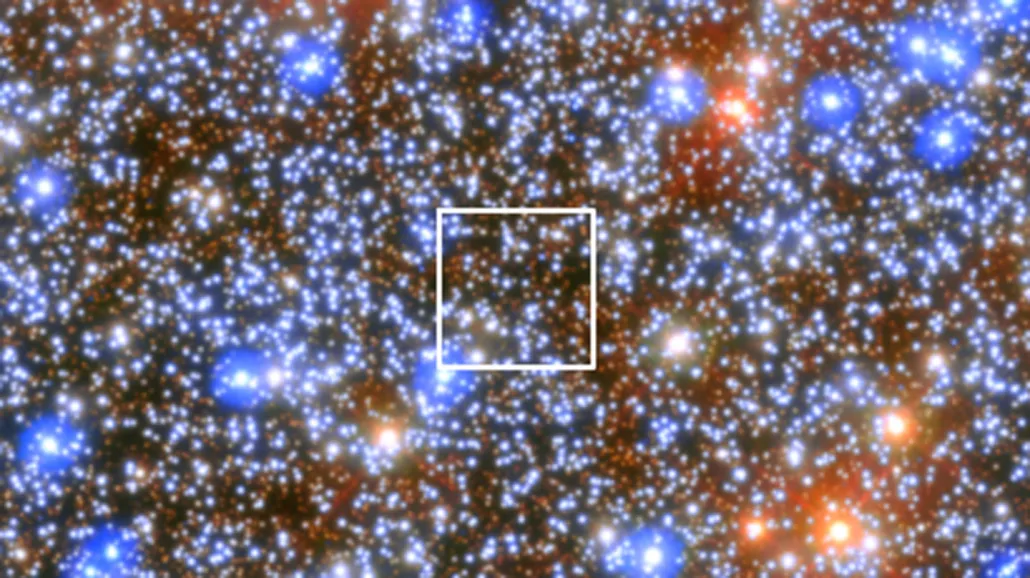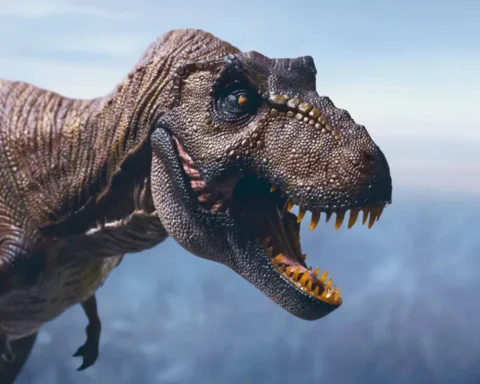For the first time, astronomers have spotted a middleweight black hole in the nearby universe. The discovery could help solve the riddle of how even heftier black holes form and grow up with their host galaxies.
The black hole, which sits about 16,000 light-years from Earth in the center of star cluster Omega Centauri, is at least 8,200 times as massive as the sun, putting it squarely in a rare category of intermediate-mass black holes, researchers report July 10 in Nature.
Most of the black holes astronomers have detected fall into one of two categories. They’re either stellar-mass black holes, with masses up to about 100 times that of the sun, or supermassive black holes, which reside in the centers of galaxies and clock in at hundreds of thousands to billions of times the mass of the sun.
Black holes with masses in the middle could help span the gap between the two categories and explain how the supermassive ones got so big. But these black holes are a little like Bigfoot: There have been many claimed sightings, but most turn out not to be real (SN: 2/8/17).“There’s this rather wide mass range, between 100 and 100,000 solar masses, where there are only very few detections,” says astronomer Maximilian Häberle of the Max Planck Institute for Astronomy in Heidelberg, Germany. “It’s interesting to find out whether they are there, and we just don’t see them because they are hard to detect. Or maybe there’s also a reason why they don’t exist at all.”One reason to think midsized black holes should exist is because the supermassive black holes astronomers have spotted in the early universe didn’t have time to grow so big if they were just eating gas and stars like black holes do today (SN: 1/18/21). If those black holes grew from mergers of intermediate-mass seeds, that could solve the puzzle (SN: 6/2/23).“It’s like a missing link that is needed to explain the existence of the supermassive black holes,” says Texas-based astronomer and data scientist Eva Noyola, who was not involved in the new work. “If it’s proven that [intermediate-mass black holes] happen in dense stellar clusters, you have a solution there that’s pretty elegant and simple.”So astronomers have been hunting for midsize black holes for decades, and searching Omega Centauri specifically since at least 2008. As the most massive cluster of stars in the Milky Way, it’s a relatively easy spot to search, and it may be the remnant core of another galaxy that merged with the Milky Way about 10 billion years ago (SN: 11/1/18).“It’s basically a galactic nucleus frozen in time,” says study coauthor Nadine Neumayer, also of the Max Planck Institute for Astronomy. Its black hole could be representative of all small galaxies’ black holes 10 billion years ago. “It tells us immediately something about the seed mass for black holes.”But previous studies left it unclear whether Omega Centauri hosted a single medium-size black hole, or a bunch of smaller black holes close together.Using 20 years of Hubble Space Telescope observations, Hӓberle and colleagues tracked the motions of 1.4 million individual stars in the cluster and searched for stars moving faster than expected.The team found seven stars zipping around the innermost regions of the cluster at speeds between 66 and 113 kilometers per second — speeds that should have rocketed the stars out of the cluster altogether. The only way those stars could remain in the cluster is if a single massive object is holding them close, the team concludes.The observations of superfast stars, combined with other observations through the years, should resolve the debate about the black hole in Omega Centauri, says Noyola, who was on the team that first claimed to see the black hole in 2008 and faced skepticism when they reported the result.It wasn’t until over a decade later that astronomers nabbed undeniable evidence of an intermediate mass black hole. The first solid detection came from the LIGO gravitational wave observatory, which recorded ripples in spacetime shaken off after two smaller black holes merged to form a single black hole with about 142 solar masses (SN: 9/2/20). But that collision occurred about 17 billion light-years from Earth, making it challenging to study.Omega Centauri’s black hole has two advantages over that one, from an astronomer’s perspective: It’s in our galactic neighborhood, and astronomers can continue to observe it. Hӓberle and his colleagues are planning to use the James Webb Space Telescope, or JWST, to get more information on the orbiting stars’ speeds, which will let them put better limits on the black hole’s mass.Another group, led by astrophysicist Oleg Kargaltsev at George Washington University in Washington, D.C., is using JWST to look for light emitted by super-hot gas flowing into the black hole.“It will be a completely independent, very different method of proving that there is an intermediate-mass black hole,” Kargaltsev says.

















